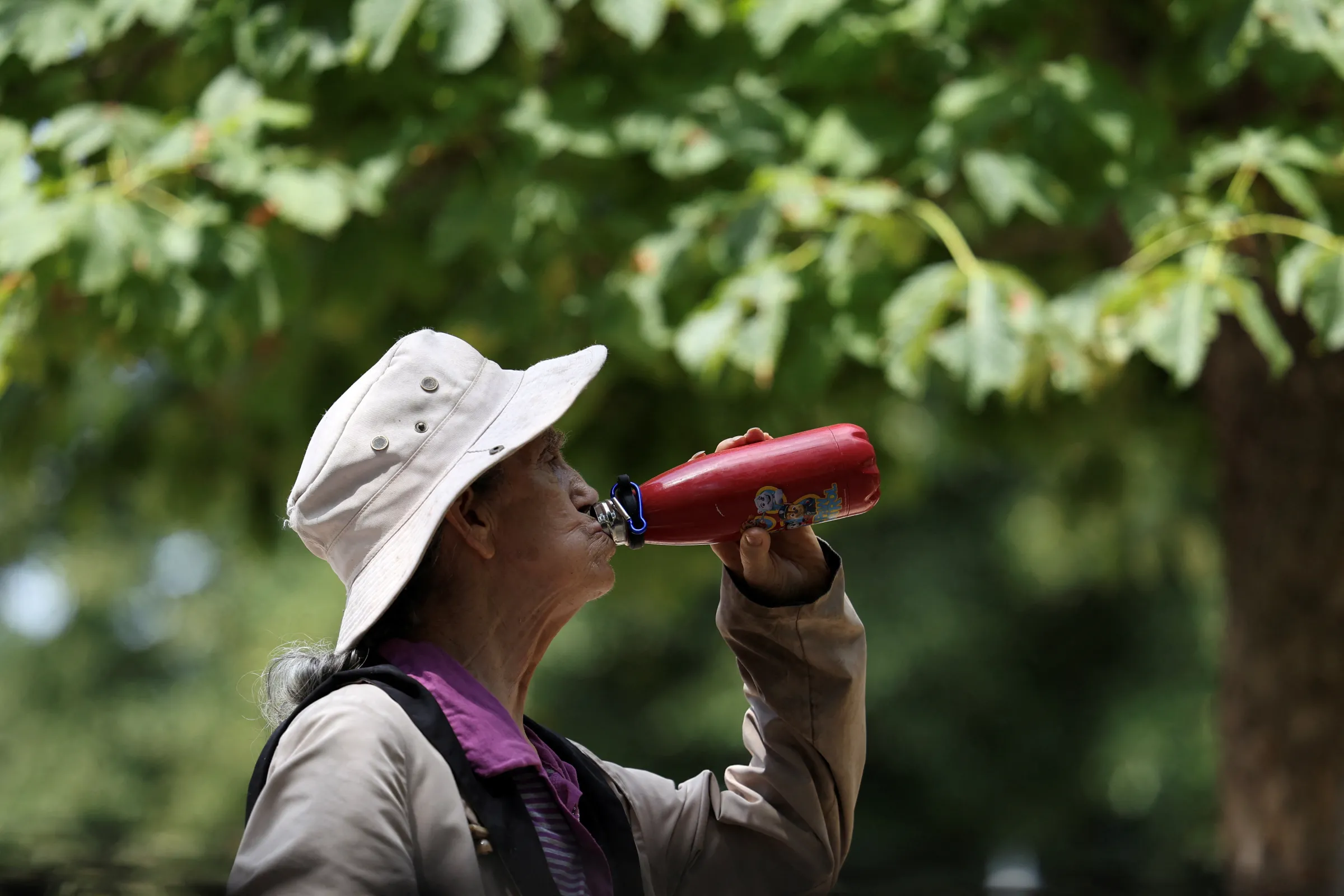A growing number of households are still vulnerable as they simply do not have the means to adequately cool their homes.
Energy poverty cannot be ignored as heatwaves scorch Europe
Opinion

Opinion
A woman drinks water at Retiro park during a heatwave, in Madrid, Spain, July 1, 2025. REUTERS/Juan Medina
Millions of households in energy-inefficient housing are at risk from extreme heat in Europe; we must climate-proof our homes.
Mónica Vidal is a Senior Built Environment Campaigner at Climate Action Network (CAN) Europe.
Summer energy poverty is not a new phenomenon, but it is a rapidly growing one in Europe and around the world.
This year also brought record temperatures in March, April and May. While this is concerning for all sectors of society, the impacts are unevenly distributed, with southern Europe experiencing some of the harshest and most prolonged heat events.
Cities around Europe are putting forward adaptation strategies and plans to reduce temperatures and protect people from extreme heat.
Worms, a city in Germany, has developed a Heat Action Plan that includes community-driven measures like a "Hitzetelefon" (heat telephone), through which elderly and vulnerable residents can request volunteer heat mentors to provide household help or shopping assistance.
But a growing number of households are still vulnerable as they simply do not have the means to adequately cool their homes.
This impacts their health, comfort, quality of sleep and, in some cases, productivity. This is particularly concerning for elderly people, children and those living with health conditions.
Defining summer energy poverty
It has been estimated that some form of energy poverty affects around 50 million people in the European Union. At its core, energy poverty is closely linked to financial poverty, driven by low wages, high living costs and unemployment.
In Europe, the focus has mostly been on winter energy poverty – when households do not have the means to keep their homes warm. But summer energy poverty has been overlooked.
For instance, the latest EU data on summer energy poverty dates back to 2012, when 19% of households were unable to adequately cool their homes.
This figure has substantially increased given the rise in global temperatures, but limited data makes it difficult to determine the impact extreme heat is having on households.
One figure we do have is the number of people in Europe affected by heat stress - the number one weather-related fatality in Europe.
The European Environment Agency (EEA) says as many as 95% of the fatalities associated with weather and climate-related extremes in Europe between 1980 and 2023 were linked to heatwaves.
And this is set to increase, as indicated by the rise in the number of hospital admissions during times of extreme heat, putting further strain on encumbered health services.
The EEA also forecast the EU could experience over 100,000 additional annual heat fatalities by the end of the century under a high warming scenario.
Addressing the root causes of the climate crisis is the priority, but our homes and cities need to begin urgently adapting to this impending health emergency.
The second step is to use legislation already in place to drive forward the transition to a just and climate-resilient built environment.
Under the Energy Performance of Buildings directive, EU member states are now required to submit National Building Renovation Plans (NBRPs) by the end of the year.
For governments, especially those in southern Europe, this presents an opportunity to ensure a just and climate-resilient built environment and show that energy poverty is a year-round issue for millions of households.
The good news is that solutions already exist and can address both heating and cooling needs for homes. Insulating and replacing outdated fossil fuel heating systems with renewable systems, such as heat pumps, can ensure healthier and more comfortable living environments all year round.
This holistic approach reduces overall energy consumption and emissions, improves energy security, addresses the climate crisis and helps lower energy costs for households.
In our homes, climate ambition meets everyday life and making these spaces energy-efficient and climate-resilient, starting first with the most vulnerable households, is not just a political opportunity, it is a moral obligation.
NBRPs are just one tool but they can set the necessary foundation for making our buildings and homes more resilient to extreme climate events, healthier, and more sustainable.
Any views expressed in this opinion piece are those of the author and not of Context or the Thomson Reuters Foundation.
Tags
- Clean power
- Adaptation
- Energy efficiency
Go Deeper
Related
Latest on Context
- 1
- 2
- 3
- 4
- 5
- 6
Most Read
- 1
- 2
- 3
- 4
- 5

















